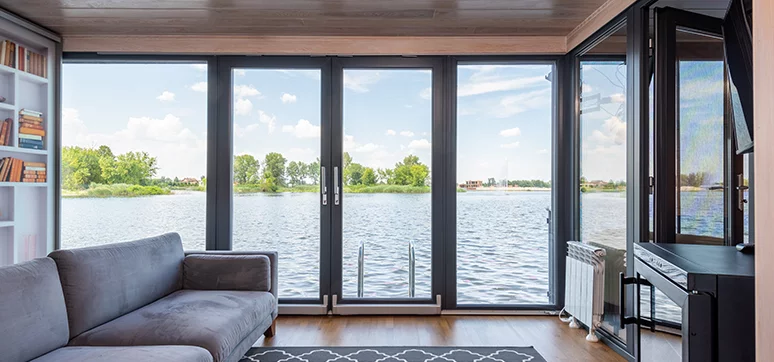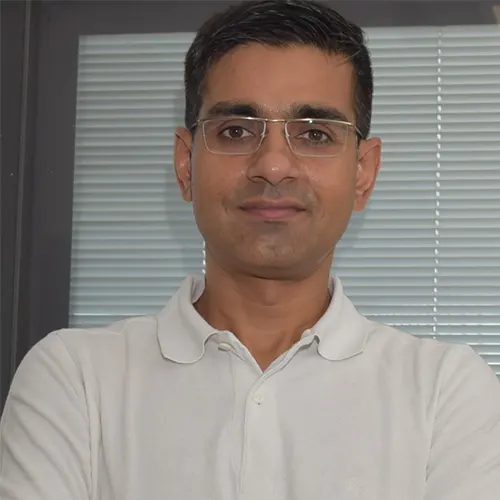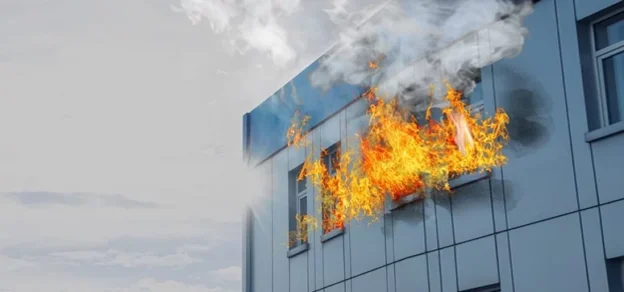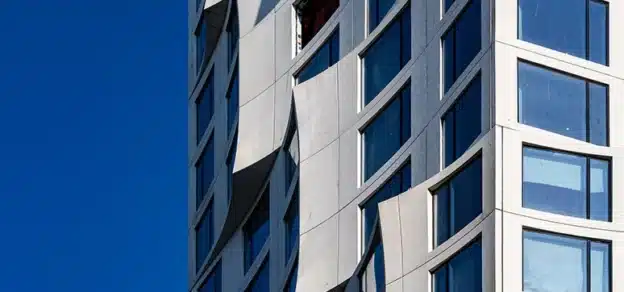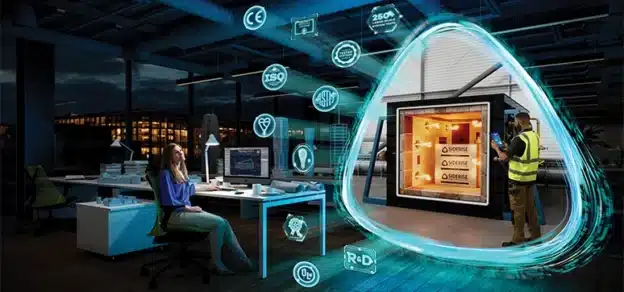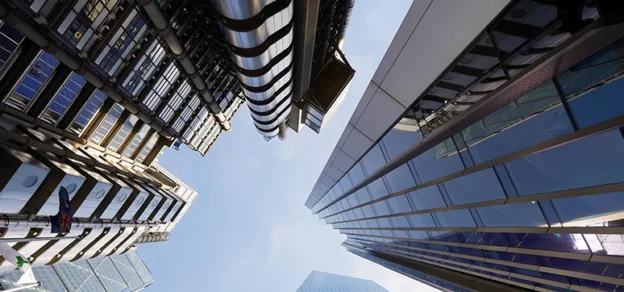Building materials for construction and fenestration play a significant role in keeping the structure and its users fire-safe. Multiple factors are considered while choosing a suitable fire-resistant material, from its load-bearing capabilities to its thermal conductivity. An impactful passive fire protection strategy is to review construction materials for their flammability. This ensures the correct fire protection standards for a building, aligning with stringent building and construction regulations.
One must approach this selection process considering the contextual factors, climatic conditions, number of users inside the building, the scale of the building and most importantly, fire-resistant materials for construction, facade and fenestration.
ACTIVE & PASSIVE FIRE PROTECTION SYSTEMS/MEASURES
Active fire protection is about detecting, stopping and containing the fire. In contrast, passive fire protection means containing the fire and preventing it from spreading further. We require both, active and passive fire safety systems working together to prevent, detect and alert, restrict and potentially suppress a developing fire. Both methods work simultaneously and in tandem with each other.
Active fire protection may involve a manual action, such as using a portable fire extinguisher. Automated or digital systems are also active forms of fire protection. Passive fire protection aims to prevent the fire from spreading, safeguard people from smoke, and limit damage to structures. Several products, such as fire doors, fire curtains, fire and smoke dampers, etc., are considered passive fire protection and can be incorporated into your fire strategy.
STANDARD FIRE TESTS TO UNDERSTAND FIRE BEHAVIOUR ON THE FAÇADE & FENESTRATION SYSTEMS
Fire resistance tests intend to assess the performance of construction elements for their load-bearing or fire-separating properties – for their regulated use in buildings. A fire-resistance rating ideally means the duration for which a passive fire protection system can endure a standard fire resistance test. These testing fire protection systems demonstrate the ability of a structure to withstand realistic fire temperatures. Different materials must be protected at or below specific temperatures, which will help the building retain its structure and not collapse in the event of a fire.
Fire testing involves live fire exposures beyond particular temperatures, depending on the material’s fire-resistant rating. Apart from fire exposure, many such techniques are taken to ensure the survivability of the materials under realistic conditions. It is critical to select façade materials that meet fire resistance standards. This is because façade spread is one of the fastest ways a fire travels through buildings. Therefore, the properties of the system and materials utilised in the construction are vital to prevent the spread of fire.
Indian fire safety standards comprise various testing methods for examining the surface burning characteristics of building materials. These tests primarily observe the combustive properties of a given sample to determine its flammability and relative burning behaviour. Through various tests, both flame spread and smoke-developed observations are reported for a given sample. The ratings measure the speed at which flames progress across the interiors of a building, while smoke development observations mark the amount of smoke a sample emits as it burns.
The materials are first tested for their fire resistance properties, after which they are closely observed and recorded. These analytics convey whether the material meets the fire resistance and the locality’s flammability testing norms and regulations. This further aids in deciding material specifics as per the purpose of the building.
